| |
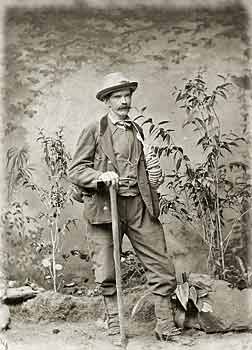
ALPINE GUIDES:
A STORY OF LOVE AND RESPONSIBILITY FOR THE MOUNTAINS
Cesare Maestri
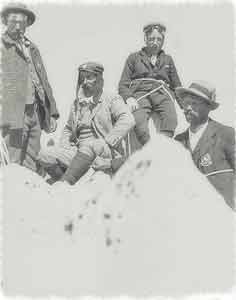
In 1821, the town of Chamonix in the French Alps saw the founding of the world’s first Alpine Guide Association. But the profession understood in its modern sense had already begun some years before, in 1786, the year when the Monte Bianco was first conquered.
The conquest of the Roof of Europe, the “Tetto d’Europa” drew scientists, explorers and many just curious people to the Alps and to the Dolomites. Most were nobles and wealthy folks coming from Germany, England and Italy; they were pushed by enthusiasm and courage but they were unaware of the perils of the mountains they wanted to explore. Arriving in the villages huddled at the feet of the mountains, they sought backing from the locals of the place. They chose the most expert and courageous hunters as escorts because they knew all the paths, the gorges and gullies and every aspect of the mountains, and these skills became the only reference point the adventurers could safely trust.At first, these mountain dwellers, surefooted as mountain goats, strong as bears and free as eagles, were hired as bearers of backpacks and provisions. Their tasks, however, were not limited to trudging like mules along impervious valleys, climbing up vertical walls and making their way across insidious glaciers; these mountain men did more than slog under the weight of boots and supplies. Showing pride, skill, strong will and a profound knowledge of the mountains, as “leaders of the rope”, they challenged and overcame the most difficult routes and the toughest climbs. And then, arriving a few metres from their destination, they deferentially stopped, respectfully removed their caps and bowing slightly, allowed their “Signori” to go ahead, granting them the honour of arriving first at the summit.
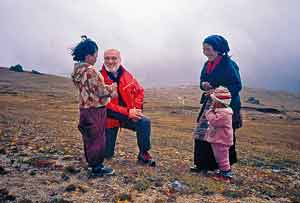 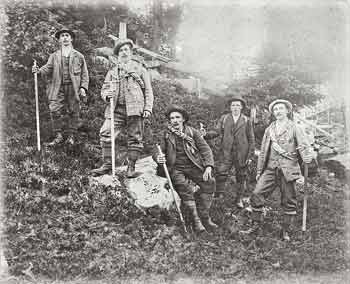
Very soon, however, these humble bearers of burdens began to appreciate their own value and refusing the secondary role attributed to them, claimed their due importance and recognition as “primi di cordata” rope leaders. They took on, then, the function of the Mountain Guide, the role of the leader, who with skill, experience and a sense of responsibility, safely leads the group. From then on, Mountain Guides became the undisputed protagonists of mountaineering and as such, they linked their names to the conquest of all the most important mountains of the Earth. There is no question that the origins of this profession are to be attributed to a comprehensible need of money, because a sure engagement with a wealthy explorer meant economic security that enabled the guide to buy himself a cow or saved him from the grief of having to emigrate. If we consider the fact that there have never been wealthy guides, it is clear that at the base of this choice of profession, there has always been a great love for the mountains and for adventure. In the life of an Alpine Guide, there are moments of immense satisfaction and intense joy that fully compensate all the risks, dangers and responsibilities that are inherent in a profession that has few equals.
In line with this, it is interesting to read what the famous guide of Cormayeur, Emile Rey wrote, towards the middle of the 19th century: “…it is not the earnings that push me up to the peaks, it is the great passion I have for the mountains. I have always considered the payment secondary in my life as a guide.”
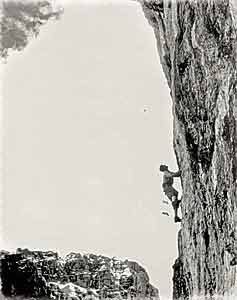 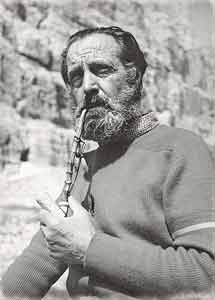 
In two hundred years, alpine guides, the famous and the unknown, have written with their deeds, that code of honour that still today is the imperative of the category, passing it down from generation to generation to remind those who are undertaking the career, of the costs and the duties that have to be respected.
Today the profession of the Alpine Guide is coordinated by a National Board that supervises and safeguards all the juridical and social aspects of the category. But in spite of the protection of national laws, the profession is constantly beset by unauthorised individuals who generally are not controlled by the competent authorities and are not punished when they, for imprudence or lack of skill, cause accidents or tragedies. In this period of globalisation when, for necessity or for wishful thinking we tend too easily to improvise, the category of Alpine Guides risks being heavily damaged by incapable and inexperienced “guides”, who know neither the mountains, nor the way to approach them, nor the dangers that they can hide.
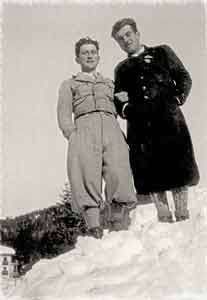 I have always loved, and I still love this vocation and that is why I suffer when I see it relegated to the rank of temporary solution for the unemployed, giving them a paid summer job or “easy” earnings. And I suffer even more when I think that my life as an Alpine Guide has given me the chance to fulfil myself in this society; it has enabled me to live a decorous and intense life, full of excitement and of great responsibility, a life in which the mountains have the importance for me that the workbench has for a factory worker, the canvas for a painter, the instrument for a musician and the theatre for an actor.Being an Alpine Guide means that our lives will be marked by the heaviest fatigue, the most difficult sacrifices, the most serious risks and ours will be the responsibility of having to make drastic decisions instantly, and assuming totally the consequent responsibilities.Being a guide also means having in our DNA a profound sense of the sacredness of the life of those who, with confidence, entrust themselves to us. Above all, it means having the greatest respect for that moral and juridical commitment, assumed together with the “Libretto di Guida” the Guides’s Booklet, which imposes absolute respect for the safety and the well-being of our companions.
.
It is to pay tribute to this wonderful profession that the “Museo delle Guide” (Guides’ Museum) was founded at Madonna di Campiglio. It collects the relics and trophies that we wish to pass on to future generations to point out how much Alpine Guides have done for the discovery and the development of our land, a land that owes its worldwide fame to the tenacity and the dedication of these professionals.
Being an Alpine guide means being delegated to the protection, not only of those who rope themselves to us, but also of the environment, a common heritage of all of us, of which we guides have made ourselves guarantors and defenders.Our museum wants to remember the “historical families” that made the history of Madonna di Campiglio and that brought life to the Dolomites of Brenta, from the Dallagiacoma to the Gasperi, from the Vidi to the Alimonta, from the Serafini to the Detassis…. It would like to display our commitment and our concerns, as well as our faith in the young people who will be taking our places. |
|
